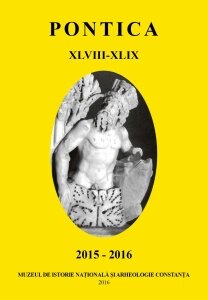Observaţii privind evidenţierea unor microfosile în fragmente ceramice din diverse periegheze şi aşezări din Dobrogea
Remarks on Microfossil’s Emphasizing in Ceramic Fragments from Various Field Surveys and Settlements in Dobrudja
Author(s): Cornelia Cărpuş, Leonid CărpuşSubject(s): History, Anthropology, Social Sciences, Archaeology, Local History / Microhistory, Ancient World
Published by: Muzeul de Istorie Națională și Arheologie Constanța
Keywords: ceramics; micropalaeontology; analysis; microfossils; markers; marine fauna;
Summary/Abstract: Among the most common inclusions in ceramics that we observed during laboratory analysis, there are all kinds of inorganic or organic elements. Amidst the ingredients we often find in the ceramic vessels’ paste, some of them natural to the claymatrix or intentionally added by prehistoric potters, we can specify another type of inclusions, such as microfossils. They are presented as calcareous or siliceous skeletal remains of microscopic marine organisms. Thus, we observed elements of fossil aquatic microfauna, especially foraminifera, ostracods, sponges, corals, clams, snails, etc. as whole individuals, fragments or just their molds. Why is it so important to study the marine microfossils that we sometimes meet in our environment, in some fossiliferous clays, sands or into the flint or rock matrix?The fossil microfauna elements identified in some ceramic fragments’ pasta individualize the respective vessels as these natural inclusions are biostratigraphical and technological markers. They can provide data on the clay material age and sometimes the combustion temperature or the path followed by these ceramics.
Journal: Pontica
- Issue Year: 2015
- Issue No: 48-49
- Page Range: 475-488
- Page Count: 14
- Language: Romanian

